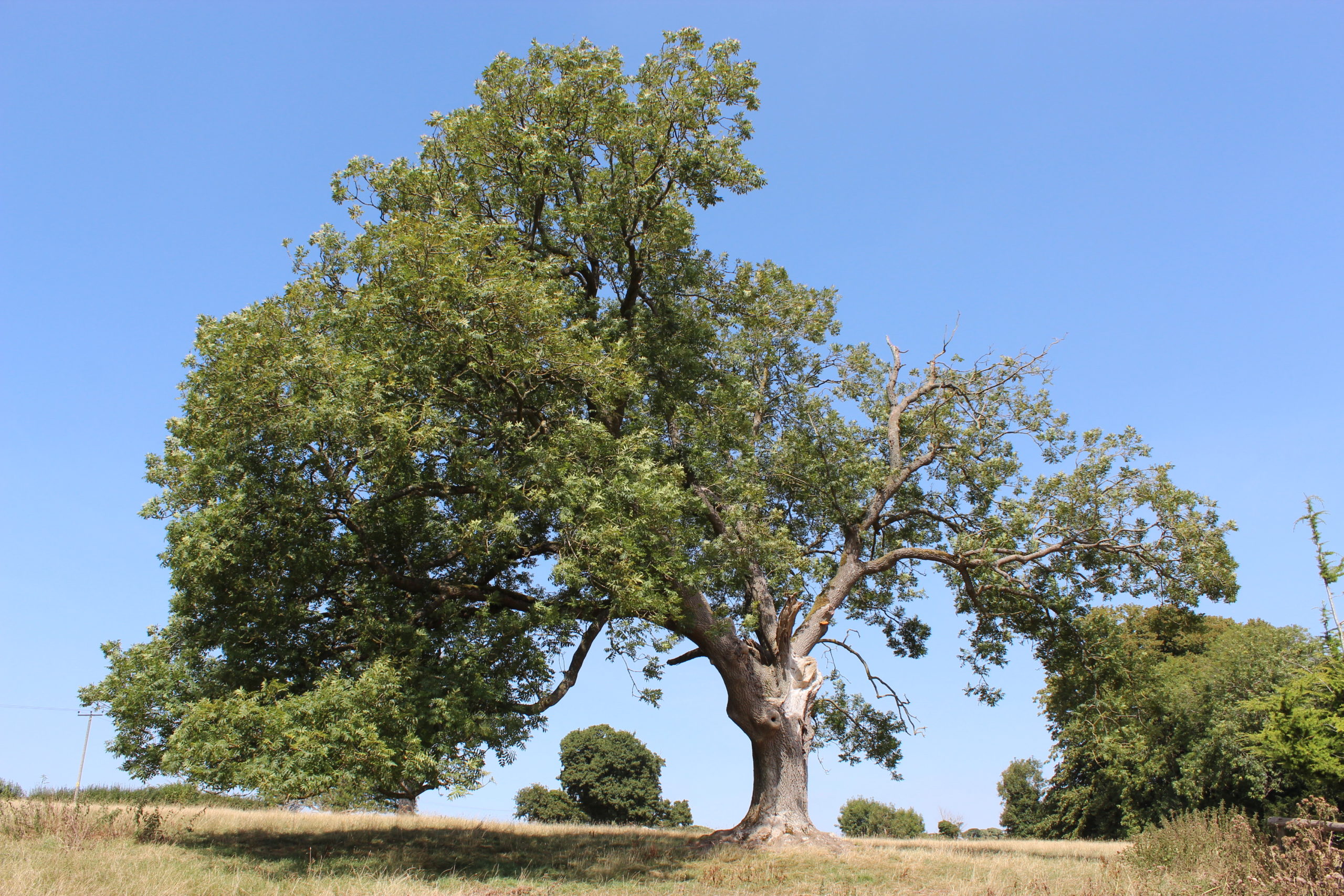
Ash trees across the UK are dying – and fast…
Trees are a key visual feature in any rural landscape, including the Cotswolds National Landscape. Currently though, we are set to lose one type almost entirely – the ash tree. A destructive fungal disease – ash dieback – has been spreading since 2012, and it will kill most of the ash trees in the UK, including those in the Cotswolds. This is no small thing – ash trees are the third most common tree in the country. Ash dieback became evident in the Cotswolds in 2018, and there is no cure, so we are very likely to lose over 90% of ash trees in woodland, and around 70% of those outside woods, including big veteran trees and ancient pollards.
Losing ash trees = losing habitat
Ash is a dominant tree in the Cotswold landscape, and in some places it can provide the majority of tree cover. And it is not only an important woodland tree, it is also significant in the wider landscape and can be found lining the roadside, in fields, in hedges, and in parks and gardens. Ash trees also provide habitat and food for 111 species of insect and mites, and 29 of those are specific to ash. Bats use ash trees for foraging and hibernation, and rows of trees provide flight lines across the landscape connecting roost and foraging areas. Mature ash trees with holes and hollows provide roost sites for birds, and homes for small mammals. It’s no exaggeration to say that the loss of ash trees will have a devastating impact on the landscape and wildlife of the Cotswolds and surrounding areas.
What are we doing? Mitigating the effects…
To try and tackle the impact of the problem, a partnership of organisations and experts from across the Cotswolds, Gloucester, Cheltenham and the Vale of Gloucester have joined forces. Their aim is to offer help for ash dieback in areas outside woodland (as owners and managers of woodlands are already being supported and guided by the Forestry Commission). The partnership’s aim is to work with farmers, land managers, and communities, and plant new trees to succeed the ash and provide an effective response to their disappearance.
It will be crucial to maximise the benefits new trees will provide for wildlife, the landscape, and people – so these considerations will guide where trees will be planted. Replacement tree species to be planted include oak, beech, lime, field maple, and hazel. These trees all reflect the character of the area, provide the best benefits, and provide the best hope for the future of the landscape.
How you can help?
Fund a tree!
The partnership cannot do this work on its own – they need your help with funding, tree planting, and guidance on planting sites. The partnership is starting to raise funds so it can start planting trees this coming winter. You can help enormously by making a donation to the Ash Fund. Any amount will help. Donating £20 would pay for a tree, and plant and protect it; ensuring it will survive and grow in the landscape of the Cotswolds, Vale of Gloucester, or in and around Stroud, Gloucester, Cheltenham and Tewkesbury.
![]()
or contact mark.connelly@cotswolds-nl.org.uk
Sponsor the project
The partnership would love to hear from companies and organisations that would like to sponsor the tree planting programme. For more info, email mark.connelly@cotswolds-nl.org.uk
Get involved with Ourboretum!
We’re working with BBC Radio Gloucestershire to call on you to plant and grow
2,020 trees in the year 2020.
Our efforts will be about the right tree, in the right place, for the right reason – growing a virtual arboretum across Gloucestershire.
Whether planting in a pot at home, pots at school, work pots, group pots, club pots, allotment pots, business pots, college pots, let’s go potty for trees and fight to replace the dying ash species.
This campaign features three species of tree which thrive in Gloucestershire: oak, beech and hazel.

Ourboretum is being generously supported by Ground Control – who are providing 2,000 pots, as well as compost and labels, to help people get started or continue planting. Many of the materials provided will go to schools and community groups, but will also be available for gardening novices who don’t have any equipment they can repurpose for the project.
You can help us remember, through photos!
Mark Connelly, Land Management Lead at the Cotswolds National Landscape, and the partnership above want to create a visual memory bank of prominent and notable ash trees in the landscape, before they are lost, by taking photographic portraits of them. Photographs will also help identify where to plant new trees. They need photographs of ash trees that are significant in the landscape (and which show the trees in the context of their landscape setting). This includes single ash trees, or trees in rows or groups, those found in hedgerows, alongside roads or footpaths, in fields, parkland.
Send your photographs (up to 10mb) to ashtreephotos@cotswolds-nl.org.uk, and remember to say where they are, ideally with a grid reference and short description.
